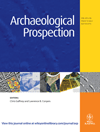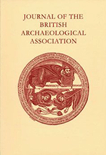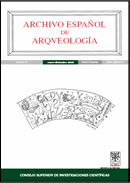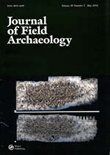
Archaeological Prospection
Scope & Guideline
Unearthing the Past: Pioneering Archaeological Insights
Introduction
Aims and Scopes
- Geophysical Survey Techniques:
The journal emphasizes the use of diverse geophysical methods, such as Ground Penetrating Radar (GPR), electromagnetic induction, and magnetometry, to detect and analyze archaeological features without excavation. - Remote Sensing Applications:
It explores the integration of remote sensing technologies, including UAVs and LiDAR, to enhance archaeological site identification and mapping, particularly in challenging environments. - Interdisciplinary Approaches:
The journal promotes interdisciplinary research that combines archaeology with geophysics, geomorphology, and environmental science to provide comprehensive insights into past human activities. - Ethical Considerations in Archaeology:
A unique contribution of the journal is its focus on ethical frameworks surrounding archaeological prospection, especially in sensitive contexts such as cemeteries and culturally significant sites. - Methodological Innovations:
The journal showcases novel methodologies, including machine learning and automated detection algorithms, to improve the efficiency and accuracy of archaeological surveys.
Trending and Emerging
- Machine Learning and AI in Archaeology:
The increasing incorporation of machine learning and artificial intelligence techniques for data analysis and site detection is a notable trend, indicating a shift towards data-driven methodologies in archaeological prospection. - Drone and UAV Applications:
The use of drones for aerial surveys and data collection has gained significant traction, showcasing their effectiveness in accessing difficult terrains and providing high-resolution imagery for archaeological analysis. - Climate Change and Archaeological Impacts:
Emerging themes surrounding the impact of climate change on archaeological sites are becoming more prevalent, highlighting the need for adaptive strategies in heritage management. - Community Engagement and Ethical Practices:
There is a growing focus on community-led archaeological initiatives and ethical practices in prospection, particularly in relation to marginalized communities and culturally sensitive sites. - Integration of Multi-Method Approaches:
A trend towards integrating various prospection methods (e.g., combining geophysical surveys with historical data and remote sensing) is evident, reflecting a holistic approach to archaeological research.
Declining or Waning
- Traditional Excavation Techniques:
Papers focusing solely on traditional excavation methods are appearing less frequently as the emphasis shifts towards non-invasive techniques and technological advancements in prospection. - Basic Geophysical Techniques:
There is a noticeable reduction in publications centered around basic applications of geophysical methods, as researchers increasingly adopt more complex, integrated approaches. - General Theoretical Discussions:
Theoretical discussions without empirical data or case studies are becoming less common, as the journal favors research that demonstrates practical applications and innovative methodologies.
Similar Journals

Journal of the British Archaeological Association
Preserving the Past, Inspiring Future DiscoveriesJournal of the British Archaeological Association is a prestigious publication in the field of archaeology, dedicated to fostering scholarly dialogue and advancing research related to Britain's rich archaeological heritage. Published by Routledge Journals, Taylor & Francis Ltd, this journal serves as a vital platform for researchers, professionals, and students alike, offering insights into archaeological practices and findings from the United Kingdom and beyond. With an ISSN of 0068-1288 and an E-ISSN of 1747-6704, the journal has a notable history spanning from 1980 to the present, contributing significantly to the academic community. Currently categorized within Quartile 4 for archaeology and visual arts, it serves as a resource for emerging researchers while promoting innovative perspectives in archaeology. Although it operates under a traditional subscription access model, the quality and depth of content delve into significant archaeological discussions, making it an essential read for those seeking to broaden their understanding of archaeological methodologies and theories. The association's commitment to preserving and interpreting archaeological data ensures that the Journal of the British Archaeological Association remains an indispensable resource for anyone passionate about uncovering the past.

African Archaeological Review
Transforming Perspectives on African ArchaeologyWelcome to the African Archaeological Review, a leading academic journal published by Springer, dedicated to advancing the field of archaeology with a unique focus on the African continent. Since its inception in 1983, this journal has become a pivotal platform for researchers, professionals, and students seeking to explore the complexities of African cultural heritage through empirical studies, theoretical discussions, and methodological innovations. With a commendable Q1 ranking in both Archaeology (Arts and Humanities) and Archaeology categories for 2023, this journal ranks among the top 10% of publications in its field, reflecting its influential contributions to archaeological scholarship. The Scopus ranking places it at #40 out of 413 in Arts and Humanities and #39 out of 354 in Social Sciences, highlighting its esteemed status within academic circles. Although it does not currently offer Open Access options, the journal remains committed to disseminating vital research findings that shape our understanding of Africa's rich archaeological landscape. Join a community dedicated to unraveling past human behaviors and interactions within diverse African environments through the pages of the African Archaeological Review.

Archivo Espanol de Arqueologia
Exploring the depths of history, one discovery at a time.Archivo Español de Arqueología is a prestigious journal published by the Consejo Superior de Investigaciones Científicas (CSIC), dedicated to the field of archaeology and the historical sciences. Since its transition to Open Access in 1991, this journal has been a significant resource for scholars and practitioners in Spain and beyond, ensuring the dissemination of high-quality research to a broad audience. With an impressive Scopus ranking that places it within the top 20% of journals in the disciplines of History and Archaeology, Archivo Español de Arqueología plays a crucial role in advancing academic discourse and promoting innovative archaeological methodologies. The journal has maintained rigorous standards, reflected in its placement within the Q2 and Q3 quartiles, enabling it to establish a reputation for excellence and reliability in archaeological scholarship. Researchers, professionals, and students are encouraged to explore the journal's diverse array of articles from its foundation year of 2009 to the present, enriching their understanding of the past through the latest findings and theoretical advancements in archaeology.

Journal of African Archaeology
Discovering the Stories Beneath Africa's SoilJournal of African Archaeology is a premier academic publication dedicated to advancing the study of Africa's archaeological heritage. Published by BRILL, this journal offers a platform for innovative research and insights into the continent's rich historical narratives and cultural evolution. With a prestigious impact factor and distinguished rankings in multiple categories—including Q1 in Archaeology, Cultural Studies, and History—this journal is prolific in fostering scholarly discourse within the arts and humanities. The ISSN for print is 1612-1651 while the E-ISSN is 2191-5784, ensuring easy access to a diverse range of articles crafted by leading experts in the field. Researchers, professionals, and students alike will find valuable and rigorously peer-reviewed content that further enhances their understanding of African archaeological practices and theories. The Journal of African Archaeology thus stands as a vital resource for anyone invested in exploring the complexities and intricacies of Africa's past.

JOURNAL OF FIELD ARCHAEOLOGY
Advancing Discoveries, Connecting Past and PresentJOURNAL OF FIELD ARCHAEOLOGY, published by Routledge Journals, Taylor & Francis Ltd, is a premier scholarly publication dedicated to advancing the field of archaeology. With an impressive impact factor reflecting its significant contributions to both the arts and humanities, this journal ranks in the Q1 category for archaeology, with a remarkable position of #21/413 in the arts and humanities realm and #19/354 in social sciences, placing it in the 95th percentile among its peers. Catering to researchers, professionals, and students alike, the journal has continuously explored critical archaeological questions since its inception in 1974, with a commitment to disseminating high-quality research and innovative methodologies up to the present. Although it operates under a traditional access model, the journal engages a broad readership with its insightful studies and findings, making it an essential resource for anyone deeply involved in archaeology and its related disciplines.

Virtual Archaeology Review
Exploring New Frontiers in Archaeology and Conservation.Virtual Archaeology Review, published by UNIV POLITECNICA VALENCIA, EDITORIAL UPV, is a distinguished open-access journal dedicated to the dynamic fields of archaeology and conservation. Based in Spain, this journal has made a significant impact in the academic community, reflected in its outstanding Q1 ranking in Archeology and Conservation for 2023, alongside impressive standings in related disciplines such as Computer Science Applications. With an active commitment to promoting the accessibility of knowledge since 2010, it provides a platform for researchers, professionals, and students to share innovative findings and methodologies in virtual archaeology, fostering collaboration across disciplines. The journal's impact factor and its strategic focus on advancing the practice of virtual methodologies in archaeology underscore its vital role in bridging technology and heritage studies. By embracing a multidisciplinary approach, Virtual Archaeology Review not only enhances academic discourse but also drives the development of effective conservation strategies, making it an essential resource for those dedicated to the preservation and appreciation of our cultural heritage.

JOURNAL OF WORLD PREHISTORY
Uncovering the Past, Shaping the Future of ArchaeologyJOURNAL OF WORLD PREHISTORY, published by SPRINGER, stands as a premier platform for disseminating pioneering research and scholarship in the field of archaeology. Boasting a prestigious Q1 status in Archeology and a remarkable 97th percentile ranking in its category, this journal has made significant contributions to the understanding of global prehistory since its inception in 1987. It serves as an invaluable resource for researchers, professionals, and students alike, providing access to high-quality articles that explore diverse archaeological methodologies, theoretical frameworks, and case studies. Although it is not an open-access journal, its impact and relevance continue to resonate within the academic community, fostering critical discussions and advancing knowledge in this vital discipline. With publications converging from 2006 and set to continue until 2024, the JOURNAL OF WORLD PREHISTORY remains committed to advancing archaeological research and enhancing interdisciplinary collaboration.

Mediterranean Archaeology & Archaeometry
Unveiling the Secrets of the Mediterranean PastMediterranean Archaeology & Archaeometry is a premier academic journal dedicated to advancing the fields of archaeology, anthropology, conservation, and history, published by UK Zhende Publishing Ltd. With its ISSN 1108-9628 and E-ISSN 2241-8121, this journal serves as a vital platform for scholars and practitioners to disseminate innovative research and findings related to the rich archaeological heritage of the Mediterranean region. It has gained remarkable recognition, achieving a Q2 ranking in anthropology and archaeology, and a Q1 classification in several categories including arts and humanities, conservation, and history as of 2023. Its impressive Scopus rankings underscore its impact, with a significant position in history (59/1760) and conservation (11/103) disciplines. Spanning years from 2008 to 2022, the journal invites open access contributions to foster collaboration and interdisciplinary dialogue among researchers, students, and professionals alike, making it an indispensable resource for those engaged in the exploration and preservation of historical narratives within the Mediterranean context.

Yorkshire Archaeological Journal
Investigating the Archaeological Treasures of YorkshireYorkshire Archaeological Journal, published by Routledge Journals, Taylor & Francis Ltd, stands as a pivotal resource in the field of archaeology, particularly focused on the rich heritage and archaeological research within the Yorkshire region of the United Kingdom. With a dedicated ISSN of 0084-4276 and an E-ISSN of 2045-0664, this journal provides both researchers and practitioners valuable insights into archaeological discoveries, methodologies, and theoretical frameworks. While it holds a Q3 ranking in both Archaeology (Arts and Humanities) and Archaeology (Social Sciences), its contributions remain significant for advancing discussions and knowledge within the discipline. The journal's archival depth, converging from as early as 1980 and continuing robustly into 2024, showcases a commitment to fostering academic discourse and exploration of archaeological heritage. Although it does not currently offer open access, its rigorous peer-reviewed articles make it an essential reference for academics, professionals, and students alike who are eager to deepen their understanding of archaeology and its applications.

Archaeologia Maritima Mediterranea-An International Journal on Underwater Archaeology
Unveiling the Secrets Beneath the WavesArchaeologia Maritima Mediterranea is a prestigious international journal focused on the vital field of underwater archaeology, published by FABRIZIO SERRA EDITORE. With an ISSN of 1724-6091 and E-ISSN 1825-3881, this journal has been a cornerstone for scholars and enthusiasts alike in the study of maritime cultures, shipwrecks, and submerged sites around the Mediterranean region since its inception. Operating from its base in Pisa, Italy, the journal has a commendable academic presence, reflected in its recent Scopus rankings which place it in the lower quartiles in both Arts and Humanities, and Social Sciences subcategories within archaeology. Despite its current Q4 categorization, it serves as an important platform for emerging research and advancements in the field, aiming to foster collaboration and knowledge exchange amongst researchers, practitioners, and students. While the journal is accessible through traditional subscription models, the lack of open access emphasizes the publisher's commitment to maintaining high academic standards. The collection of issues from 2011 to 2023 showcases a rich tapestry of research that contributes significantly to our understanding of underwater cultural heritage.